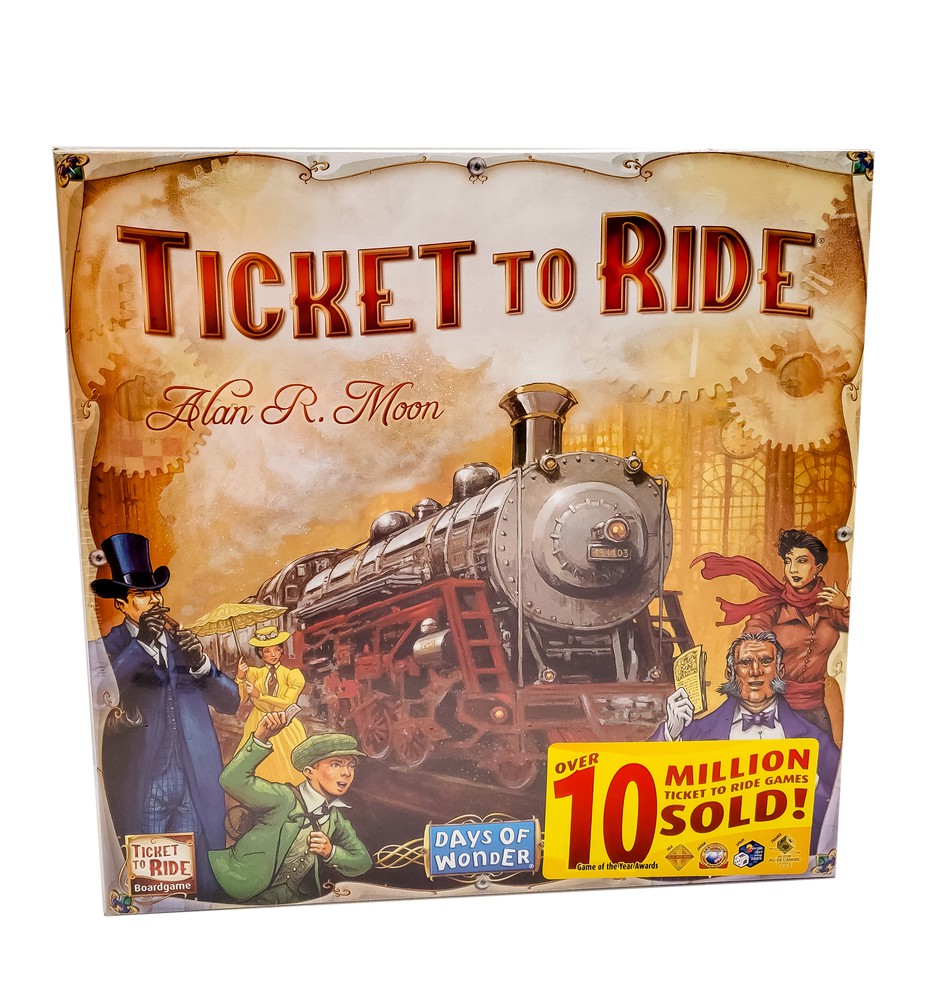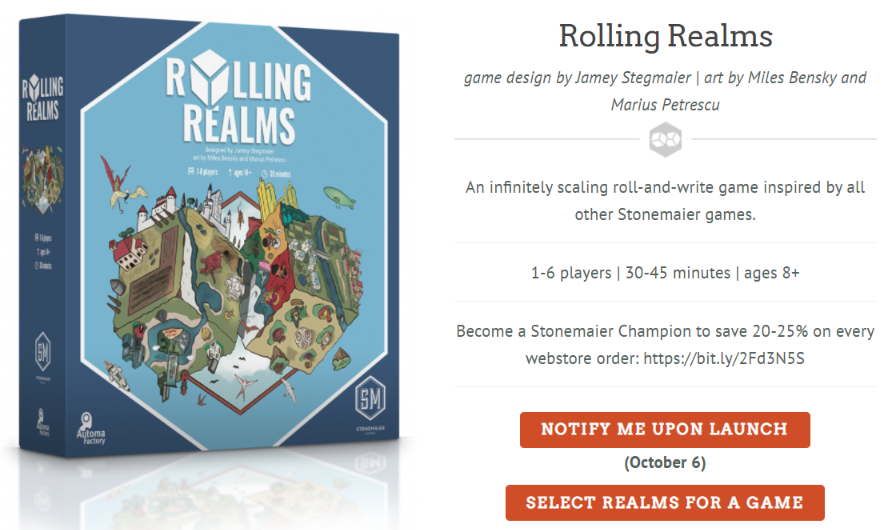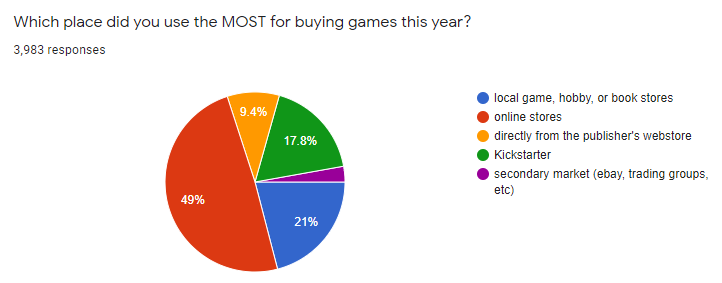A book publisher I highly respect recently asked me why we don’t use social proof at Stonemaier Games, and off the cuff I didn’t have an answer. I’ve thought about it quite a bit over the last few weeks and have discussed it with other publishers, and my conclusion is that maybe it’s something we should explore.
When I think about social proof in the game industry, images like this typically come to mind:

Quantities sold is a very real–and impressive–example of social proof, but because I was thinking about it as the only example of social proof, it seemed to have some issues:
- If a game is selling this well, you need to frequently update the sticker.
- If someone is shopping for a game and is influenced by social proof, comparison becomes a factor. Do they choose the game with 100k units sold or the one with 10 million units sold?
For the right game (like Ticket to Ride), units sold can be a powerful statement. Once I dug deeper, I realized that there are a number of other options for game publishers to consider:
- BoardGameGeek rating
- BGG rank (or categorical rank: “#3 family game” or “BGG Top 10”)
- publisher, designer, or artist of _____
- awards
- quote from reviewer or designer
- #1 bestseller of a particular publisher
- units sold (just so it’s on this list)
I think all of these are viable examples of social proof, though they depend on the product and where you’re presenting this data. For example, if you’re crowdfunding a game, it’s far too early to convey the BGG rating or rank for the game, though you could share that information for other related games by the same publisher.
Similarly, after the game is published, I think it’s worth considering who will see the social proof (and how they’ll see it). If you buy a game online–as it appears nearly 80% of people do now based on last year’s demographic survey–you’re not going to see a sticker on the box until the game is delivered to your home. So do you pay to sticker all 20,000 units you print this year, or do you somehow try to separate the games going to big-box and hobby retailers? Also, at what point does it look a bit garish to cover the beautiful box art with a giant sticker (even if it’s on the shrinkwrap)?
As a publisher who primarily sells to distributors/retailers and secondarily via the Stonemaier Games webstore (preorders and ongoing), I remain a little uncertain as to where social proof would be effectively conveyed on our website or webstore.
For example, the Rolling Realms preorder launches this Wednesday. A significant number of the potential customers who will visit our webstore are coming from our enewsletter, so do I need to sell them even more on Stonemaier Games?
Later, hopefully a growing number of people will search for information about this game they’ve heard about, and that may bring them to this page on our website. There’s more information lower on the page, and the top of the page (shown here) already seems to have enough text/info:

I’d love to hear your thoughts about social proof. Which type of social proof do you think is the most effective, and how/where do you think it’s best presented?
***
Also read: Display Your Laurels
If you gain value from the 100 articles Jamey publishes on this blog each year, please consider championing this content!
14 Comments on “What Type of Social Proof Is Most Effective? (KS Lesson #281)”
Leave a Reply to Jamey StegmaierCancel reply
If you ask a question about a specific card or ability, please type the exact text in your comment to help facilitate a speedy and precise answer.
Your comment may take a few minutes to publish. Antagonistic, rude, or degrading comments will be removed. Thank you.



To answer your question, “yes” you need to sell us on more SM content because in doing so you generate sales that propel the social proof. I’ll use Libritalia as an example. Let’s say that between all preorders in all channels (including the early distribution orders) you are able to land 40k plus from the gate (I’m personally thinking about 3 copies of the game 2 for gifts and one for myself). Rather than saying we have sold our first printing and are printing a 2nd & 3rd, I could see a way to benefit sales through projecting future sales, if your able to project say 100k games in x amount of time; doing so could have the added benefit of letting folks know this game might not be available if you wait. Rather than saying “due to limited print runs”. -a negative connotation- social proof that this game is a hot item-positive- could generate the early numbers to show to distribution and retail that this game is worth picking up. While we don’t want to lie, companies project everyday: I’m sure all this needs to be researched more and I’m not sure how accurate a projection needs to be in publishing relatively speaking I think 15% seems okay. Then of course if a product is unable to project a big number like 100k we probably don’t want to project the smaller number but find another way to social proof to our “first”audience, so that we get more lookers from a further out audience like say ICv2; for further example, so you get the press release in ICv2 and like publications, but a second mention of the game in the same publication a few weeks later “Stonemaier Games is projected to do 4M in sales from Libritalia by years end” gets attention of folks who matter. It’s all positive & honest.
I have found that many of Tom Vassel’s early seals of approvals and of excellence have been successful with most who play them. To this day I do not enjoy ticket to ride even though most everyone who ai’ve introduced the game to does really find it fascinating so I keep bringing it out and buying expansions. I’ve found that Between Two Castles is really one of the top games I’ve been able to bring to the table, folks love it more than just about any game that I’ve introduced to them, it’s one game that gets played two times in a row, and I enjoy it as well. I bring this up to say that the biggest social proof is one game is heard of and folks subconsciously “relate” to it, while the other game is relatively unknown. Social proof is largely a direct result of publisher behavior or interactions with the public to curate it’s interest in an idea a game a book, a movie, a product an event. I dare say that in a controlled setting any product could out sell its counterpart.
The social proof that matters to me has been that you deliver what you promise, and when you can give back to the community you do. Instead of worrying about stickers and validation how about spending more time getting more funds to people who need it? Let others worry about the proof. Just help when you can?
Your artists put a lot of work into beautiful boxes. How does slapping a marketing “sticker” on the box improve the game once the decision to buy has been taken?
If you must add such marketing material then put it on the outside so it is discarded with the shrinkwrap.
I am aware that there are people who buy games without checking them out on BGG first. Strange, but true.
Such people may be influenced by stickers on the box. But isn’t that sort of thing down to the actual shop manager to know what sort of thing the customers in that shop care about?
I’d be tempted to include a sheet of various related stickers in the big box when you send the games to the shops and let the shop decide if they want them on the box, on the shelf, in the window, over the cashier’s head or whatever works for them.
Yes, of course when I’m talking about a sticker, it’s on the shrinkwrap, not the actual box–that’s why it’s a sticker and not revised box art. :)
Great point about the box showing awards and units sold being largely invisible to most purchasers until after the purchase! I’d still proudly display a kennerspiel des jahres label but at least I could justify it as my own pride rather than a hugely effective marketing tool ;-)
The effectiveness of quotes came up in a Kickstarter group recently. Survey data from gamers suggested most ignored quotes on a page – however the marketers in the group all strongly disagreed with the survey results that implied they’re ineffective. I ran 2 ads during the Micro Dojo campaign and the one showing quotes outperformed the other. For unproven designers I think quotes convey a lot of social proof in lieu of any other track record. In my particular case I think the number of positive quotes I had definitely contributed to a feeling of “there are lots of people that already love this game” for something that had been played by relatively few at that point.
With a reputation as big as Stonemaier, quotes probably have diminished returns, especially for loyal customers that buy because of the brand. So social proof is a good shortcut when there isn’t an already established brand.
Thanks for sharing that data, Ben. I tend to agree that quotes on project pages are effective and judging a potential backer towards a pledge.
I suspect that the survey from players saying they ignore quotes was evidence of self-reported data being unreliable.
It is probably not a conscious choice to read a quote and change your mind on a game, so most players would say it doesn’t factor into their decision making.
I might even go a step further and suggest that there is a certain pride of intellectuality amongst gamers to think that we wouldn’t be taken in by such subtle marketing ‘tricks’ even though the science suggests that influences like this work on near everyone human, so answering a survey in this way is a stubborn defiance :)
I don’t think Social Proof influences me, other than the classic “50,000 Elvis Fans Can’t be Wrong” :)
But seriously, word of mouth from friends, recommendations from the FLGS, etc. are all far more influential than a sticker about how many units have sold, and if I want to know the BGG rating, I’ll just look it up there.
In my case the only social proof that really can affect my decision when purchasing a boardgame are awards and recognition that it has achieved. Of course, this only applies for second editions or reprints, but they are important and relevant mentions that I think deserve some space either on the cover or on the back of the box. I can think of Euphoria and the Mensa Select award, Everdell and the number of distinctions mentioned in the cover, or Root and the different prizes with the logo in the back of the box. It goes without saying that only generally appreciated awards should be mentioned. In my personal experience, they had a clear impact when convincing someone (usually a new one in the hobby) to choose one among two or three equally appealing games. I think this is a must in any reprint.
As to the other ideas mentioned in the post, they don’t have any impact in my decision: ranks and ratings change with time, number of copies sold is not a relevant information for me, and quotes are only valuable to me if I really trust that particular reviewer or designer. To me it is ridiculous how studios and publishing houses use those cherry-picked statements trying to convince the audience to watch/read their products: “Awesome!”, “A page-turner”, “Best author of her generation”, etc. These kind of statements never help me and, to tell the truth, they even work as a disincentive for me, because they make me smell smoke in there… But of course, this is just my own personal opinion and there could be people who are happy to be guided that way.
I also find award lists to be very helpful. They also don’t have to take up much space, allowing good artwork to shine as intended. It’s true that they can only make a difference on later printings, but for people on a limited budget, it can be hard to keep up with all the games coming out every year, and they will likely find themselves browsing games that have been out for a while.
BGG ranks don’t do much for me, as many prize-winning games can have ranks that don’t look very impressive–but this probably has more to do with certain types of games tending to be favored by BGG rank and ratings.
The most effective type of social proof for me is word of mouth from those I’m connected with. Claims have very little to do with whether I’ll support something, tho I do know folks who really value BGG rankings, awards won, and units sold. It’s an interesting topic.
Social proof can be an indicator of popularity or mainstream-level content. But take Starbucks – I’d submit it’s popular because of marketing, not necessarily because it has the best coffee on Earth. The Nike Air Jordan 1 = popular. Millions sold. Is it the best shoe for my foot? Maybe not.
In the big picture I tend to agree with Seth Godin, who says: “There is no correlation between good and famous. There are so many things that are good, that are not famous.” One of the good things about being an indie game designer is the popularity of what I’m doing doesn’t have to be a concern. The choice to focus on doing good helps keep my focus on supporters first.
Personally social proof does nothing for me and I believe takes away from the aesthetic appeal of the box art. My purchases are almost always dictated from word of mouth, experience, reviews, or history of the designer/publisher. That’s my experience but I’m not the shopper at Target knowing nothing and buying a present for someone. In that case it might make sense. But that same shopper in an FLGS or online might be different still. Thanks.
Another “social proof” could be the number of hits you get when you google your product. For example Rolling Realms gets only about 5,690,000 results vs Wingspan which gets 12,500,000 hits
But that’s probably just be because it’s a newer game haha